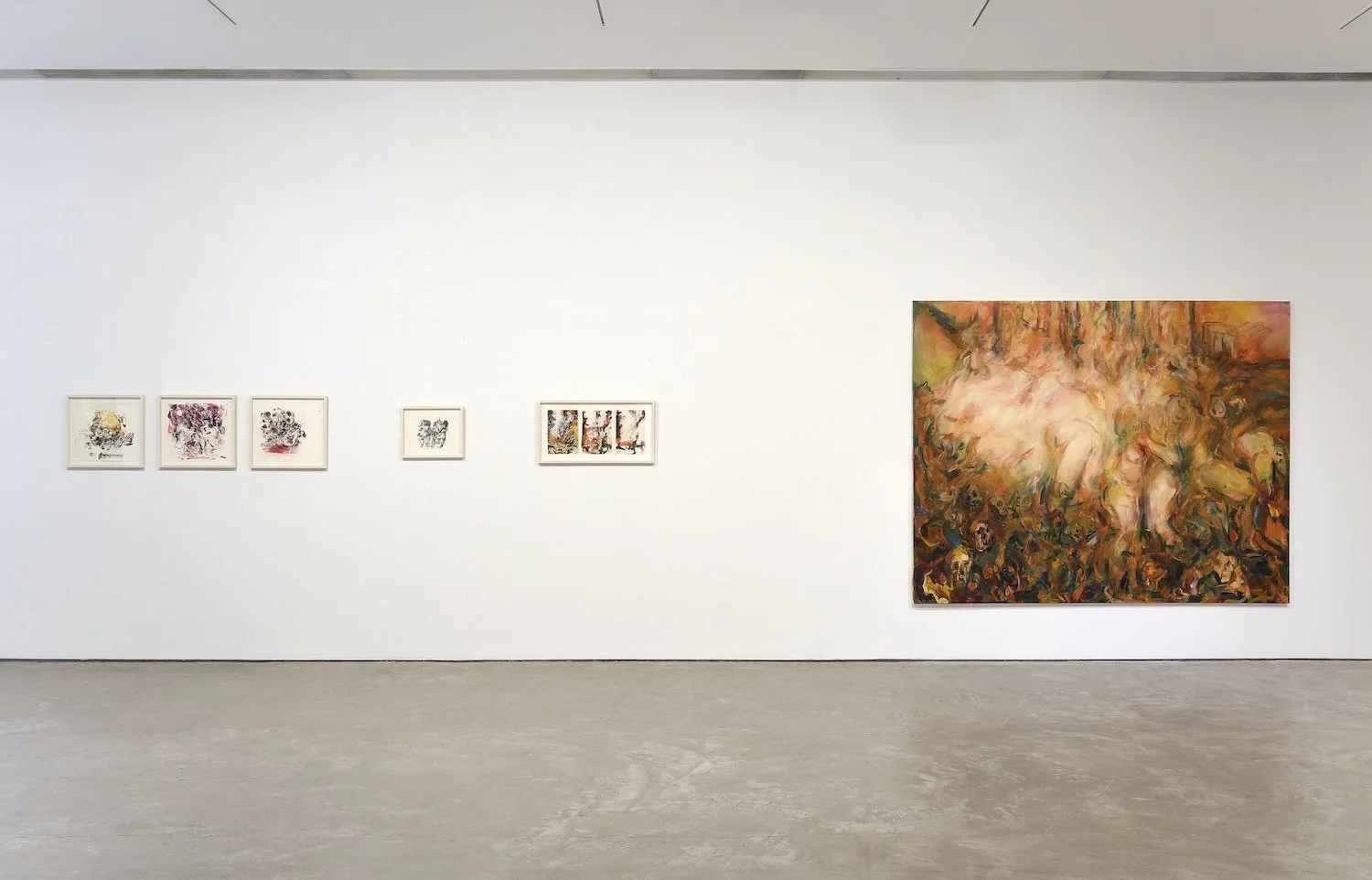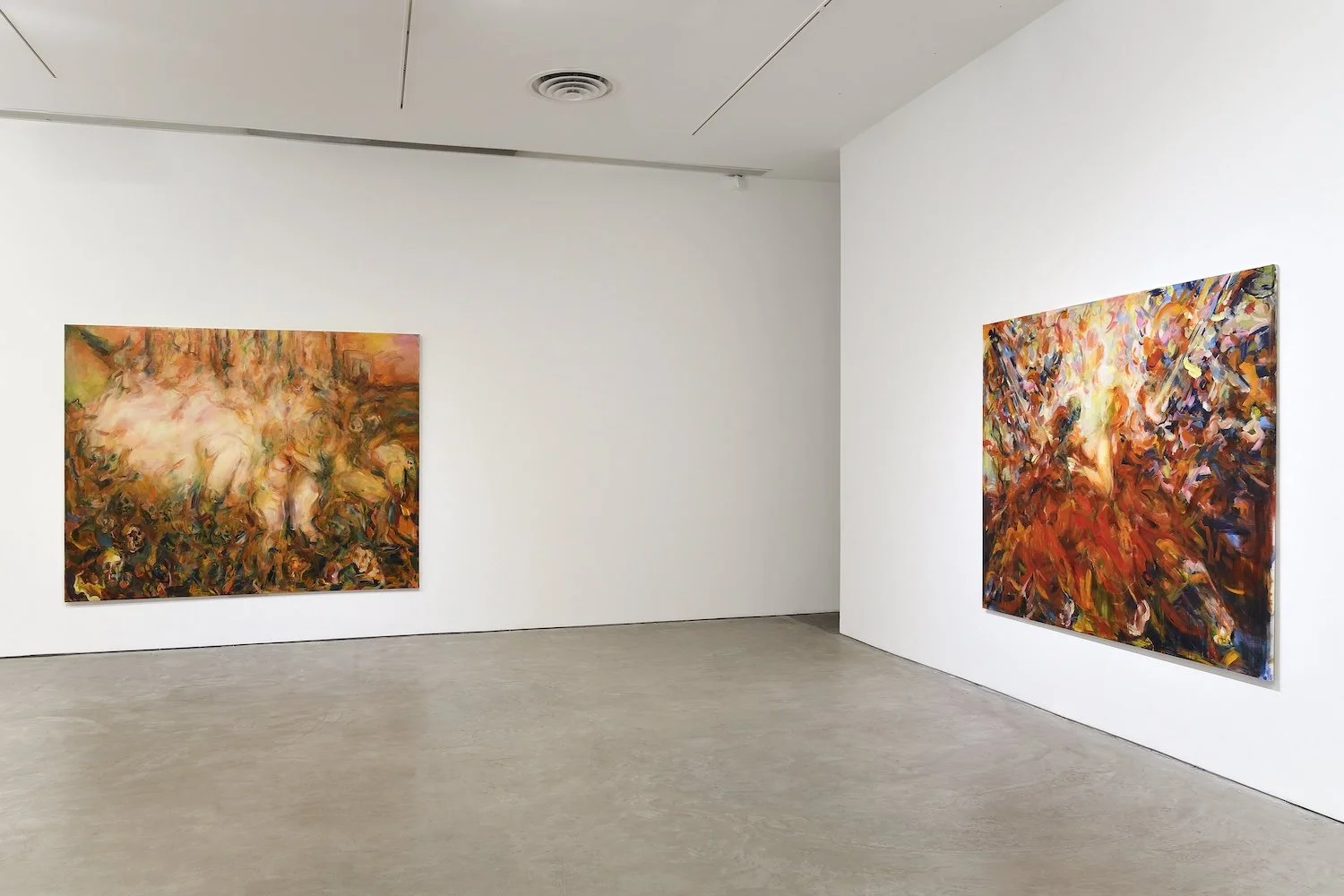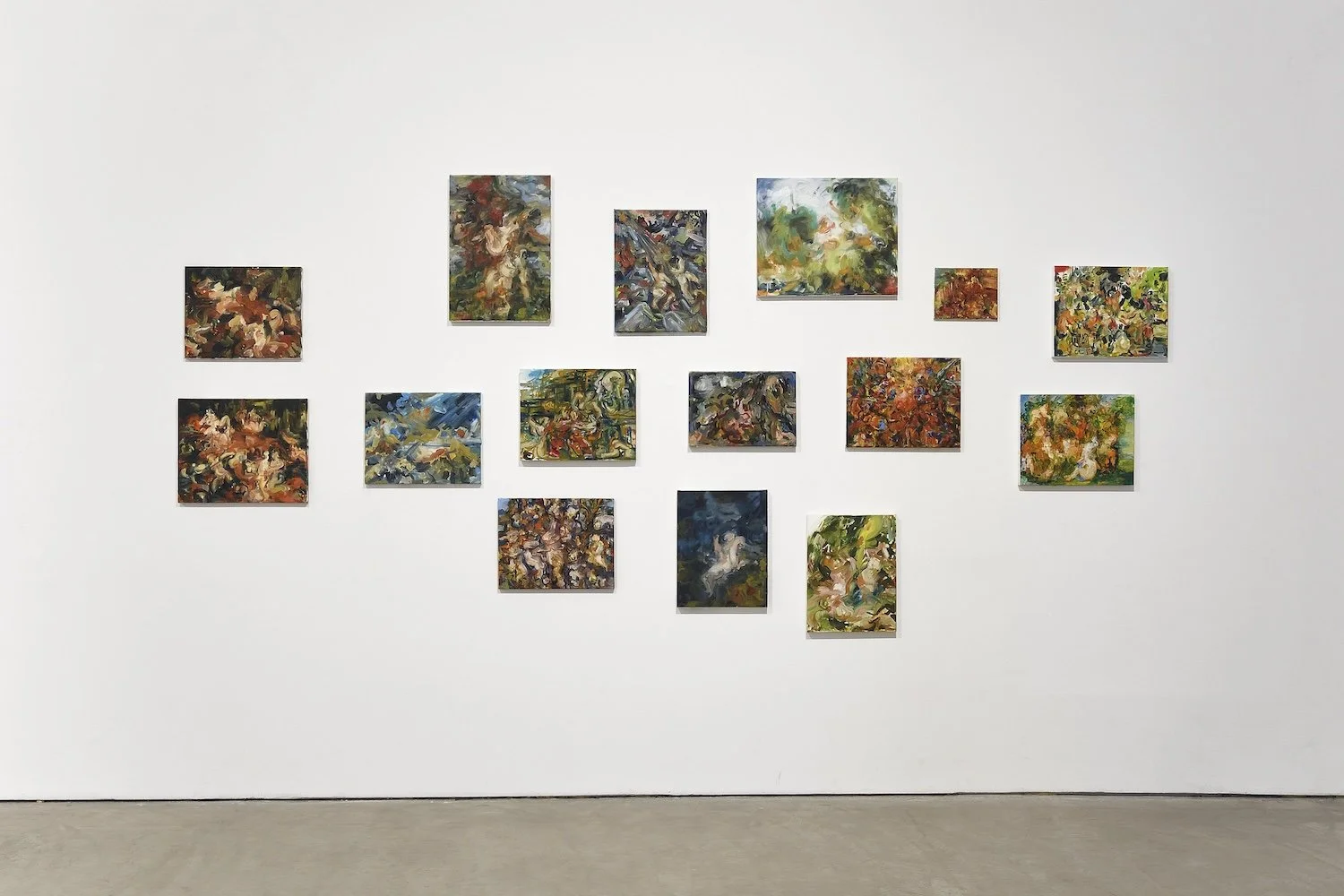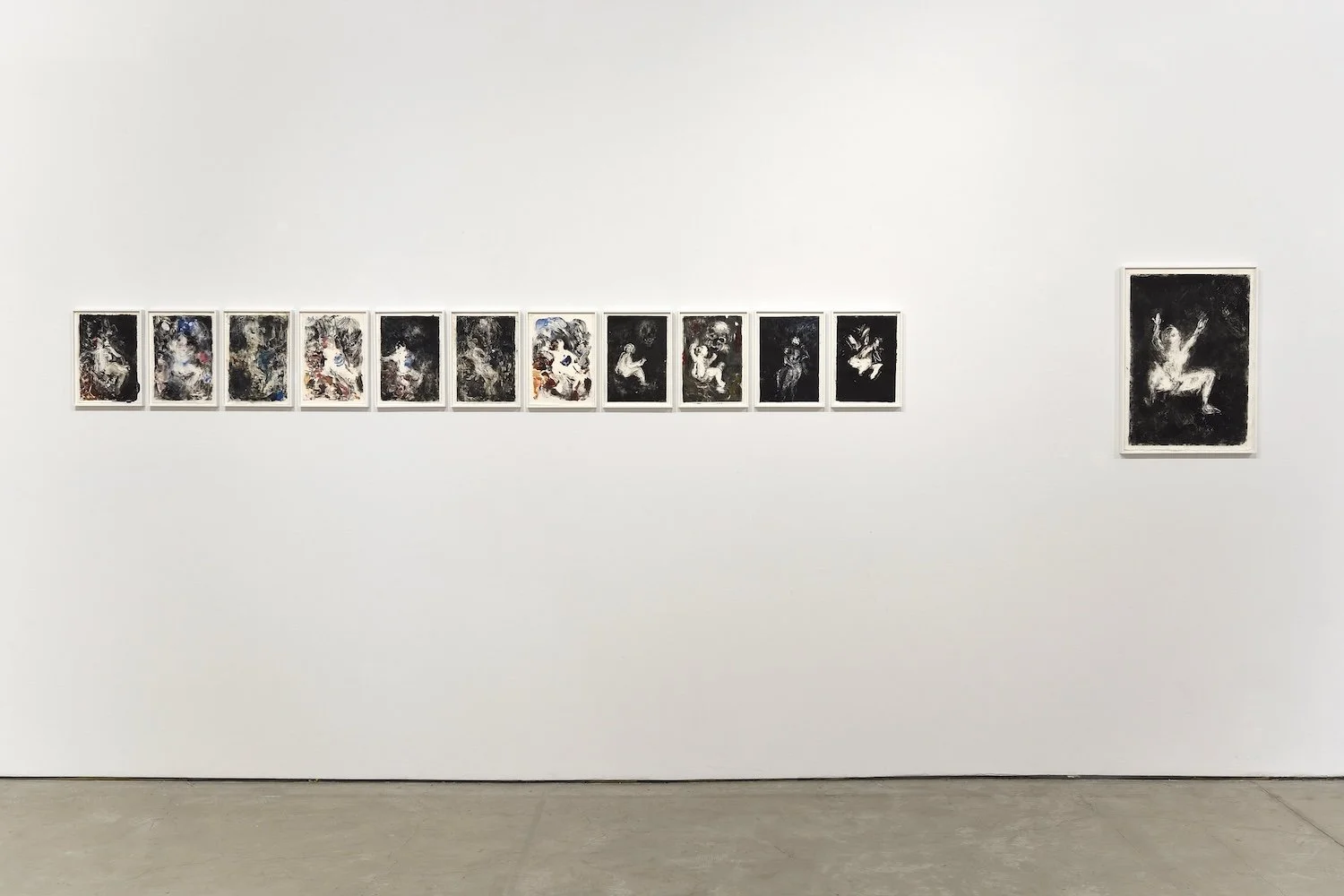A Dancefloor of One’s Own, 2024
Solo show at Ileana Tounta Contemporary Art Center, Athens, Greece.
18 April - 25 May 2024
(Scroll down for exhibition text by Panos Giannikopoulos)
Installation shots
Selected individual works
Katerina Papazissi's latest solo exhibition, A Dancefloor of One's Own, invites viewers into a realm where the boundaries between painting and performance, studio and insurgent dancefloor, dissolve. Within a swirling maelstrom of color, Papazissi's canvases become a testament to the cyclical nature of life, an exploration of descent and ascent, trauma, and liberation. The artist continues her long-standing research on the flesh and its transformations, drawing from a rich tapestry of references from art history, contemporary culture, and political events. Using bodily motion as a tool and colour as the guide she creates luscious compositions on the verge between the representational and the abstract.
Numerous studies of her reference images in small-scale oil paintings and drawings, which gradually transform into idiosyncratic compositions, pave the way for her large-scale canvases. Papazissi reinterprets the works of acclaimed masters of the Western painting tradition, from the Renaissance, the Baroque, and Romanticism to Flemish painting, modernism, and expressionism. A close examination reveals nods to Delacroix, Poussin, Jordaens, Rubens and Tintoretto. The chronological course becomes irrelevant as the historical matter itself is called into question. Unexpected guests traverse boundaries, appearing and dissolving in a continuous play with darkness and light. The references are not reproduced as fragments but are interlinked and transformed through unexpected movements, revealing resonances and modes of entanglement while maintaining a deep sense of immersion. Papazissi delves into the structures of the referenced paintings, rearticulating their points of flight, their perspective becoming a prospect.
Starting as studies of Corregio's Jupiter and Io, the monotype print series Studies into Darkness plays a central role in the body of work presented. Kinesis and form emerge as if from a primordial blackness preceding any speech utterance. Papazissi makes use of the process of monotype printing, in which images develop as variations of the first one painted on the printing plate, as sequential ghost images, asserting their individuality yet allowing for the possibility of multiplicity. In this way, the series makes apparent the relentless transformation underlying all the works of the exhibition.
Papazissi's practice extends beyond the confines of the canvas. Her training in somatic practices gives her work a sense of physicality and movement, propelling her gestural energy into the domain of the tangible. Figures emerge out of abstract brushstrokes, intertwining with one another and with the landscape, only to disappear again in the next bout of destruction, suggesting a mass, an ever-present entanglement with every living or non-living form. It is a performance that defies easy categorization, blurring the boundaries between self and other.
At the heart of Papazissi's practice lies a deep engagement with the female body. She seeks to reclaim the female form as a site of empowerment and liberation, challenging viewers to confront their preconceived notions of gender, power, and representation. The objectified images of naked women in European painting and the gender binary are questioned. Simultaneously, the sensual body is set in motion, reclaiming another way to experience the world. Her practice thus confronts what Linda Nochlin referred to as the "destructive sexual fantasy". The artist explores what kinds of painterly images have been deemed possible and how the entanglement of forms and references creates a new erogenous zone, addressing desire and shifting the perspective towards that of the female artist. The transition from representation to abstraction and back again, in the course of which realistic details such as distinct limb characterization become obsolete, bypasses the male gaze and addresses the hybridity of each body’s presence. This intentional liberation of form and body allows for alternative narratives to develop and a more expansive and inclusive exploration of representation to take place.
Incorporating images from rave parties in places devastated by war and social/economic/environmental conjunctures, such as wildfires and bombings, infuses Papazissi's work with a palpable sense of urgency and relevance. Through this juxtaposition, she creates a visual dialogue that transcends time, inviting viewers to reflect on the interconnectedness of past and present and consider the implications for our shared future. The descent into the underworld becomes a metaphor for the journey into the depths of the subconscious and personal and social traumas. Through her untypical dance, the artist seeks not mere escapism but catharsis, release, and transformation. Following cycles of fragmentation and amalgamation, Papazissi's work challenges viewers to confront the complexities of their own existence. Her canvases become mirrors reflecting the hazards and joys of movement and being moved, of knowing that we are affected and that we are affective, to quote Fred Moten. It is a reflection on the porous boundaries, a conceptual area where past, present, and speculative futures converge. Pieces come together and fall apart under the music beat, neon colours take over, and glimpses of new potential spaces become shared.
Panos Giannikopoulos
1.In a play with words and worlds, Woolf's metaphor A Room of One's Own (1929) becomes a dancing space, intimate and public at the same time




























